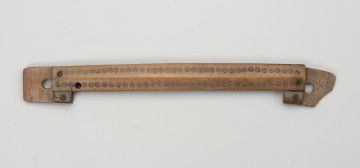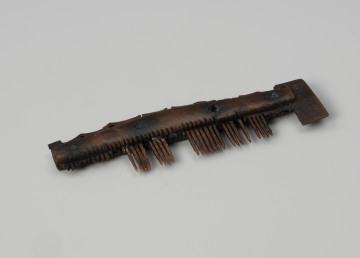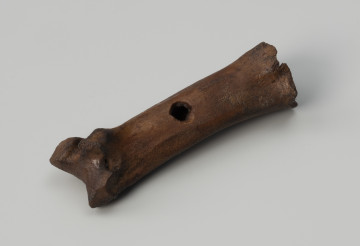
Comb sheath
1201 — 1225
National Museum in Szczecin
Part of the collection: Middle Ages
An ornamental pin from Wolin, found at the site of a southern settlement, made of animal bone. One side has a pointed tip while the other side has an irregularly shaped flat thickening with a small hole drilled on two sides. In the Middle Ages, as well as hundreds of years before, pins were used to fasten robes, as the equivalent of today's buttons or to secure hairstyles. The hole in the upper part of the monument was intended to hang the pin on a piece of leather strap or thong perhaps as part of a costume or hairpin, or to attach other decorative elements visible when pinned. Bone pins were made from fragments of the shafts of animal long bones, usually of farmed animals such as cattle or horses, which were the most readily available raw material. Longitudinal fragments of the outer bone tissue known as the compact substance were usually used. On the inner side of the Wolin piece, remnants of spongy substance are also preserved, filling the epiphyses of the long bones located at their ends. Considering also the irregularity of the surface, especially of the upper decorative part, it can be assumed that the presented pin was made by an untrained person or the work was not completed. Ewa Górkiewicz-Bucka
Author / creator
Object type
pin (jewelry)
Technique
hewn, smoothing
Material
bone
Origin / acquisition method
field research
Creation time / dating
Creation / finding place
Owner
Muzeum Narodowe w Szczecinie
Identification number
Location / status

1201 — 1225
National Museum in Szczecin

801 — 1201
National Museum in Szczecin

1001 — 1201
National Museum in Szczecin
DISCOVER this TOPIC
Castle Museum in Łańcut
DISCOVER this PATH
Educational path